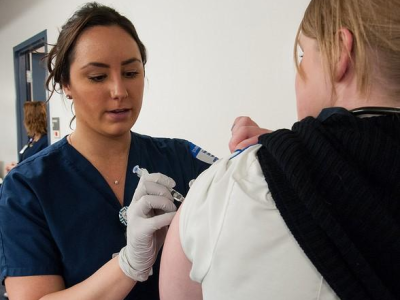A meta-analysis of 11 studies suggests that 20% of patients, most with severe COVID-19, had at least one symptom 3 years after infection, primarily fatigue, sleep disturbances, and shortness of breath.
Researchers in Europe, Asia, and Australia assessed the pooled prevalence of persistent COVID-19 symptoms 3 years after infection in observational studies published in 2023 and 2024. The studies, which reported data from 142,171 long-COVID patients aged 36 to 86 years (87% men), were conducted in Bulgaria, China, Japan, Italy, Romania, and the United States.
All but one study focused on COVID-19 patients hospitalized in 2020; the other involved non-hospitalized patients. The authors reported the findings late last week in the Journal of Medical Virology.
Increased risk of death at 3 years
The proportion of COVID-19 survivors reporting one or more persistent symptoms at 3 years was 20% (shortness of breath, 12%; fatigue, 11%; insomnia, 11%; loss of smell or taste, 7% each; and anxiety, 6%). Lingering signs of impaired lung function included poor diffusion capacity (42%) and low forced expiratory volume in 1 second (10%).
The need for researchers to report on the proportion of patients with long COVID who have been able to return to their original job 3 years later cannot be overemphasized.
Hospitalized COVID-19 patients were at increased risk for death at 3 years (incidence rate ratio, 1.29; excess burden per 1,000 persons: 8.16). Death rates were also higher in those with and without neurologic signs at 3 years (58 of 414 [14.0%] and 94/1,196 [7.8%], respectively).
Among both nonhospitalized and hospitalized patients, long COVID contributed 9.6 and 90.0 disability-adjusted life years (DALYs) per 1,000 people in the third year post-infection, respectively.
Although long-COVID symptoms in general waned among hospitalized patients over time, a substantial burden of new or persistent symptoms remained at 3 years. Of the eight major observed physiologic clusters (neurologic, mental, pulmonary, cardiovascular, musculoskeletal, kidney, gastrointestinal, and metabolic), neurologic, pulmonary, and cardiovascular symptoms were the most prevalent.
Neurologic symptoms such as impaired memory, dizziness, and peripheral neuropathy were common, along with fatigue, mental conditions such as anxiety and depression, lung signs and symptoms such as shortness of breath and reduced lung function, and cardiovascular complications such as heart failure and abnormal heart rhythms.
"We are unable to report on the pooled prevalence regarding return to work due to lack of adequate data," the researchers wrote. "The need for researchers to report on the proportion of patients with long COVID who have been able to return to their original job 3 years later cannot be overemphasized."
Need for multidisciplinary care
Risk factors for long-term symptoms included older age, more severe COVID-19 and hospitalization, female sex, smoking, substance use, allergy, and underlying medical conditions such as congestive heart failure, chronic kidney disease, high blood pressure, and diabetes.
Our findings confirm the persistence of unresolved symptoms 3 years post-COVID-19 infection, with implications for future research, healthcare policy, and patient care.
"Overall, these findings highlight the lasting impact of COVID-19 on mortality and disability up to 3 years after infection, particularly among individuals who required hospitalization and those who experienced neurological complications," the study authors wrote. "The evidence underscores the need for ongoing monitoring, support, and targeted interventions for affected individuals, especially those with severe or complex post-acute presentations."
They also noted the similarities with persistent symptoms after infection with severe acute respiratory syndrome (SARS).
"Even 15 years after SARS epidemic in 2003, 38% of infected patients still had reduced lung diffusion capacity," the researchers wrote. "Our findings confirm the persistence of unresolved symptoms 3 years post-COVID-19 infection, with implications for future research, healthcare policy, and patient care."
"Establishing multidisciplinary care teams and integrating long COVID management into routine healthcare pathways are essential steps toward improved care delivery," they added. "Moreover, public health campaigns are vital to raise awareness, reduce stigma, and foster informed patient engagement."



















